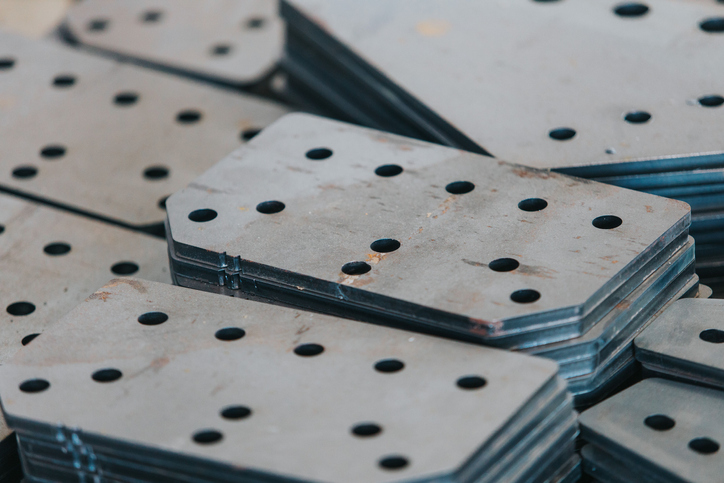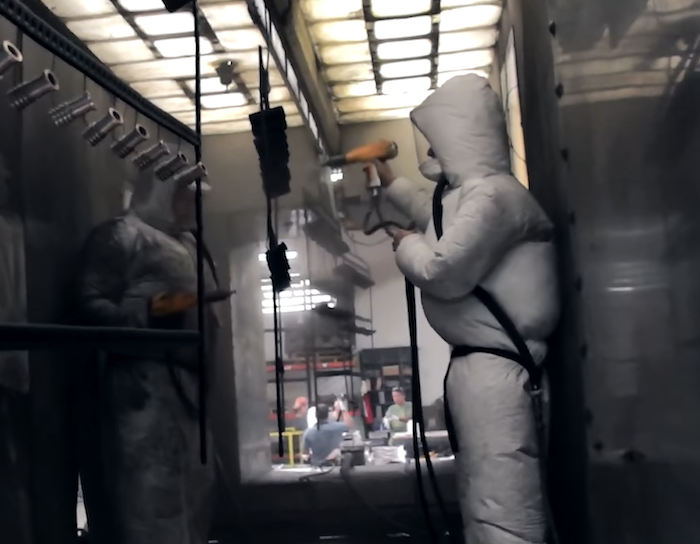Cold stamping and hot stamping are two distinct processes used in metal forming, each with its advantages and applications. This article compares cold stamping vs hot stamping, discussing their methods, benefits, limitations, and typical use cases. By understanding the differences between these two techniques, manufacturers can choose the most suitable process for their specific needs.
What is Cold Stamping?
Cold stamping is the conventional method of shaping metal blanks into shapes and designs, offering precision and versatility. Production occurs lower than the recrystallization temperature in cold stamping, whereas hot stamping requires heating. Instead of heating, the metal part undergoes intense pressure from hydraulic or mechanical presses until it forms the desired shape. Deformation of the metal part at this temperature makes obtaining anisotropy in the microscopic structure possible. As a result, properties like ductility of the metal undergo alterations that make it possible to manufacture more resistant materials. Generally, cold stamping entails using blank materials such as steel, aluminum, copper, and non-brittle alloys.

Cold Stamping Process
This manufacturing method has various processes, including deep and semi-deep drawing, fine blanking, and stamping with progressive dies.
Deep and Semi-Deep Drawing
Deep and semi-deep drawings entail the ramming of metal blanks to form cup-shaped stamp parts. The blank is usually subject to intensive pressure as the positive die rams a cavity. The drawing process involves punching when producing more complex parts, such as cylinders for automotive engines and kitchen appliances. Semi-deep drawing, similar to micro drawing, involves making shallower dents while maintaining the material thickness. Several factors contribute to having a successful metal drawing operation. These include the draw radii, blank thickness, die temperature, and press speed.
Fine Blanking
Fine blanking is a high-precision process in cold stamping that ensures the edges are well smoothed out and up to scratch. The procedure entails applying equal pressure to the top and bottom of the blank. It ensures high accuracy by using V-ring planes, punching, and counterpunching. The accuracy and precision of stamps from this cold stamping procedure are quite similar to those from hot stamping.
Stamping with Progressive Dies
Progressive die stamping is a cold stamping process that involves feeding a metal strip through a series of stations within a single die to perform multiple operations, such as cutting, bending, and punching. Each station performs a specific task, progressively shaping the metal strip into the final part as it moves through the die. This process is highly efficient and capable of producing complex, high-precision parts at high production rates.
What is Hot Stamping?
Hot stamping uses recrystallization annealing to produce high-precision metal parts. This stamping method involves heating the metal blanks beyond the melting point and shaping them into particular geometries using dies. Afterward, these heated and shaped blanks cool rapidly to contain the shapes, edges, and curves. Metal parts that undergo hot stamping are usually resistant to stress and pressure due to their improved structural forms. Hot metal stamping divides into two processes: direct and indirect hot stamping.

Direct Hot Stamping
Direct hot stamping is the standard metal forming process involving preheating metal blanks before quenching in closed dies. The product then gets trimmed by laser and undergoes thorough finishing to obtain perfect metal parts. Generally, heating temperatures in this process range between 760 and 900 K, which is perfect for transcending the recrystallization temperatures. As a result, the blank herein achieves a martensitic high-strength structure.
Indirect Hot Stamping
In indirect hot stamping, the blank gets pre-cold formed before heating it in the furnace to austenite temperatures. Then, it gets transferred for cooling as it undergoes forming and quenching concurrently. This procedure makes indirect hot stamping more suitable for creating complex parts than direct hot stamping. It ensures seamless metal flow and increases the tensile strength. Thus providing a perfect way to solve the cracking and brittle metal issues in direct hot stamping.
Factors Affecting Hot Stamping
Unlike cold stamping, hot stamping is an incredibly selective process that is only successful under stringent production factors. While most of them are precursors for incredible material strength, flexibility, and malleability, it all boils down to the economics of the production process. The following sections highlight some of the factors influencing the hot stamping process.
Tooling Design
Form and quenching tools must be up to scratch for a more successful hot stamping operation. Tools with a proper design will help produce reliable and high-strength products, as they will not cave into the cave into repeated thermal cycling. Good tooling will ensure that the high-strength zones quench quickly. Meanwhile, the isolated component zones cool slower for an ideal microstructure.
Temperature Control
The materials must be heated at the appropriate austenitization temperature to achieve the desired mechanical properties. Typically, this is around 900-950°C for boron steel. If heating occurs up to temperatures in excess of 960 K, the material could become sticky, adversely influencing the part’s quality. Similarly, the cooling rate should be properly controlled. Rapid cooling or quenching is necessary to achieve the desired hardness and strength. The cooling rate must be controlled to avoid thermal distortion or uneven hardness.
Production Rates
Hot stamping can be an excruciatingly slow process with more complex procedures. That means it can waste significant time, leading to low production rates. To counter that, adding silicon to the alloy compositions allows for higher temperature exits. Consequently, it facilitates quicker multi-forming with trimming and press punching. Quenching and laser trimming drag the time, making the cycle rates longer than they should be.
Material Properties
Material properties are the drivers and motivation for hot stamping processes. Most industries rely on metal parts from hot stamping processes, so their requirements are usually cross-cutting. Technically, these product parts must be sturdier and lightweight, perfect for the automotive and aviation sectors. Such properties improve the fuel economy and help with crashes and accidents since high-strength materials don’t break quickly on impact. Therefore, the blanks, tooling, and procedures must meet that standard.
Differences Between Cold Stamping vs Hot Stamping
| Feature | Hot Stamping | Cold Stamping |
| Temperature | Involves heating material to high temperatures (around 900-950°C). | Occurs at room temperature. |
| Material Properties | Suitable for high-strength materials like boron steel. | Works with a variety of materials. |
| Product Strength and Hardness | Produces higher strength and hardness due to phase transformation. | Lower strength and hardness because of no phase transformation. |
| Equipment | It can function with a much simpler setup using only hydraulic or mechanical presses. | Production cycles are shorter as there is no requirement to change material temperature. |
| Production Cycle Time | They produce higher strength and quality parts, so they are suitable for safety-critical components. | Produces higher strength and quality parts, so they are suitable for safety-critical components. |
| Applications | Longer production times are needed as parts must undergo heating and cooling at the end. | Suitable for manufacturing general metal parts that do not have special requirements. |


